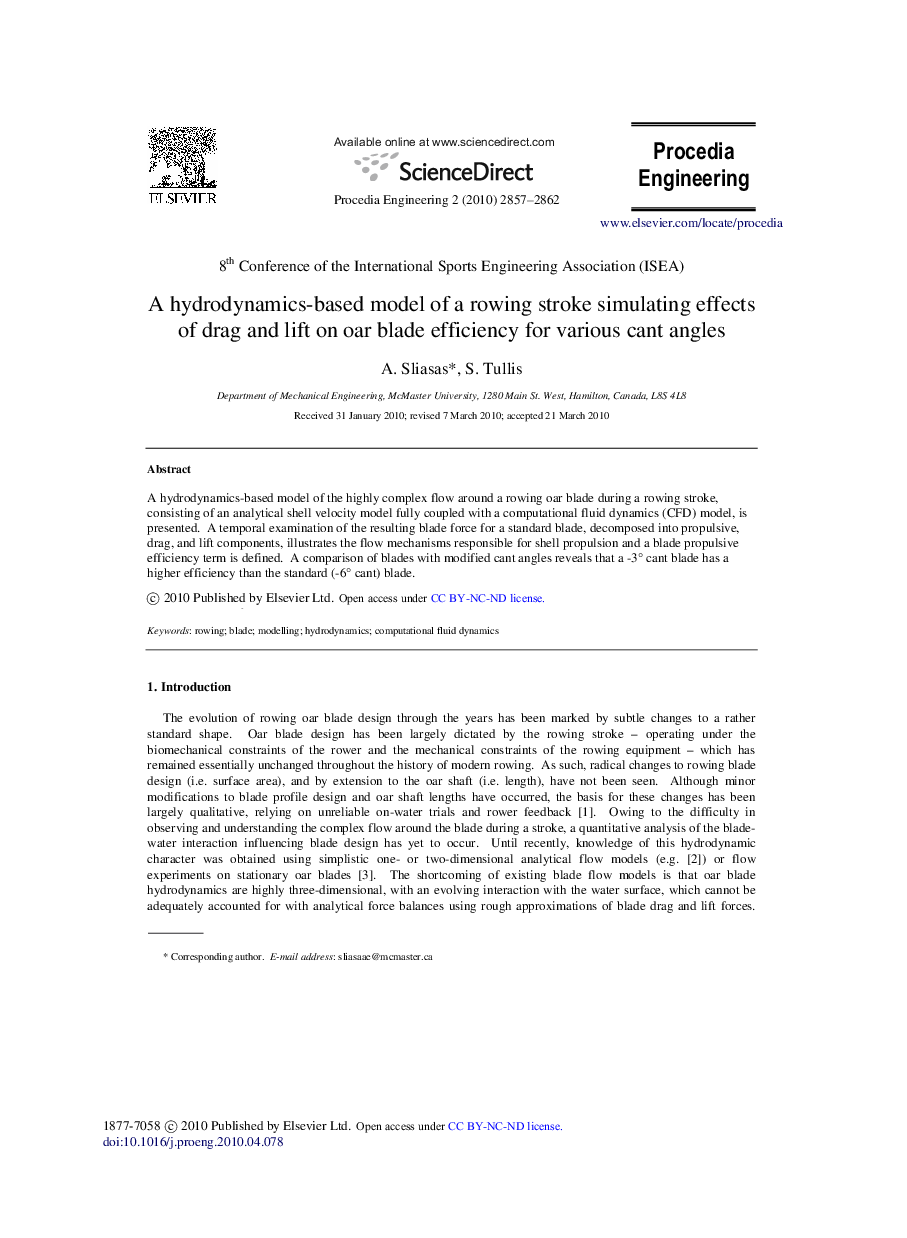| Article ID | Journal | Published Year | Pages | File Type |
|---|---|---|---|---|
| 864509 | Procedia Engineering | 2010 | 6 Pages |
Abstract
A hydrodynamics-based model of the highly complex flow around a rowing oar blade during a rowing stroke, consisting of an analytical shell velocity model fully coupled with a computational fluid dynamics (CFD) model, is presented. A temporal examination of the resulting blade force for a standard blade, decomposed into propulsive, drag, and lift components, illustrates the flow mechanisms responsible for shell propulsion and a blade propulsive efficiency term is defined. A comparison of blades with modified cant angles reveals that a −3°cant blade has a higher efficiency than the standard (−6°cant) blade.
Related Topics
Physical Sciences and Engineering
Engineering
Engineering (General)
